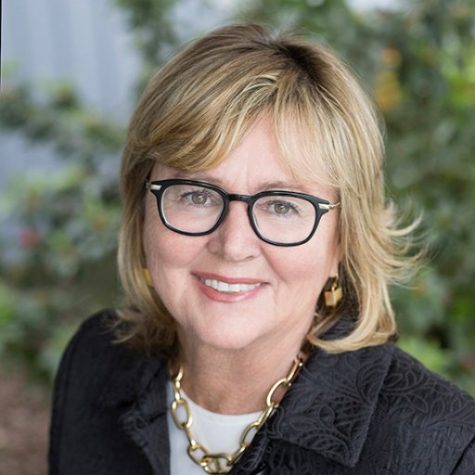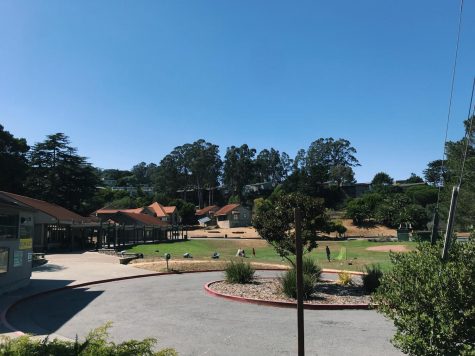Historic Settlement Passed to Desegregate Sausalito Marin City School District
September 16, 2019
On Aug. 9, 2019, California State Attorney General Xavier Beccera announced the passing of an unprecedented settlement to help desegregate the Sausalito Marin City School District within the next five years. Nine months prior to the passing of the settlement, the Attorney General’s office accused the district of purposefully segregating the primarily affluent, caucasian Willow Creek Academy from the less affluent, minority based Bayside Martin Luther King (MLK) Jr. Academy, both of which are kindergarten through eighth grade schools.
Beccera announced that the plan is set to start at the beginning of the 2020-2021 school year. It intends to provide equal education opportunities in elementary school and will pay reparations to students currently at Tamalpais High School who have suffered financially, socially or otherwise because of their district. These reparations include free counseling and tutoring services.
The issue came into the spotlight several years prior to the settlement passing. In Aug. 2016, Marin County Superintendent of Schools Mary Jane Burke wrote to the California State Superintendent of Public Instruction Tom Torlakson describing the issues the Sausalito Marin City School District faced.

As the Marin County Superintendent of Schools, Mary Jane Burke is responsible for looking out for the well being of all students.
“It appears as though the Sausalito Marin City School District Board of Trustees may be engaged in a common law conflict of interest,” Burke said. “The report indicates that board members have placed financial and educational interests of an independent charter school (Willow Creek Academy) above the interests of the students of the Sausalito Marin City School District. The report also indicates a majority of the district’s five governing board members have children enrolled in Willow Creek Academy Charter School (WCA), or are associated with WCA.”

The sky is a bright blue outside of Willow Creek Academy located in Sausalito
Burke discussed several other conflicts of interest in her letter, such as agreements that supply fiscal benefits to WCA, WCA’s negligence to pay special education encroachment and the district’s Governing Board providing facilities to WCA at no cost.
Torlakson responded in an email to Burke two months later.
“My staff reviewed this report and feel there are a number of issues that merit further review. However, many of these issues may be outside of the Department of Education’s scope. As a result, we believe a review by the Attorney General is warranted,” Torlakson said.
From there, Beccera was notified and began to develop a plan. Three years later, the settlement was ratified, offering hope for the future of the deprived Bayside MLK school.
The settlement is arranged to change the makeup of the entire Sausalito Marin City School District in a detailed five-year plan. The plan is written out in the Final Judgement of “The People of the State of California, Ex. Rel. Xavier Beccera, Attorney General of The State of California v. Sausalito Marin City School District.” Key parts of this plan include the introduction of a qualified third-party expert to facilitate and overlook meetings, a Desegregation Advisory Group formed by the District Superintendent within 90 days of the judgement, court jurisdiction over all allegations and subject matter of the People’s complaint, an assessment conducted 180 days after the settlement to gauge the community’s needs and development of a “Comprehensive Plan” to be incorporated in all the schools in the district.
The Desegregation Advisory Group (DAG) is set to meet twice a year for the next five years. Additionally, 45 days after each meeting, the DAG will publish a public written summary of what the meeting entailed. From there, the District Superintendent will review the summary to identify any possible improvements to be made.
The “Comprehensive Plan” entails a program that provides students in grades seven and eight instruction from credentialed teachers, long-term funding, teacher retention and recruitment, consideration of associated costs and feasibility, transportation that adequately serves all students from throughout the District who attend District-Operated schools and out-of-district enrollment, allowing special funding including grants and interdistrict attendance agreements, according to the Final Judgement.
At Redwood, members of the Students Organized Against Racism (SOAR) club have expressed their favor for the settlement. Wesley Briggs, a Redwood junior, feels strongly that every student should have equal education opportunities.
“I just feel like it’s every student’s right to be able to have an equal education and to not be deprived of resources. School is supposed to be a place where students can come and feel free to express their opinions in a place where they can kind of escape their outside lives,” Briggs said. “I want everybody to have the same opportunity as me and I want to have the same opportunities as people in other schools and I don’t really think that hurts anybody as long as everybody is uplifted in the process.”
Briggs also believes that there is still progress to be made in terms of combating racism here at Redwood.
“[For] the most part, I would say Redwood does a pretty good job of combating these issues. However, that’s what SOAR is for: to call out the tensions within this school. A lot of people have experienced microaggressions. There’s still a long way to go with adjusting the [awareness] of this and acknowledge how they’re acting around each other,” Briggs said.
However, Burke feels very confident that the Final Judgement is setting the Tamalpais Union High School District up for success.
“The best case scenario is where we are right now,” Burke said. “I’m so confident that we’re going to look back and say, ‘Look at this, how great!’”
Additionally, Burke is looking to successfully integrate all the students from Bayside MLK and WCA.
“I am very interested in there being a consolidation with the Mill Valley School District. So I want to take it even a step further, which has nothing to do with this settlement, but that at some point that we bring together all the students from Mill Valley as well as Bayside and Willow Creek. So they’re all going to come together,” Burke said.
“Members of the community definitely are saying they’re willing to work together. We think all kids are worthy,” Burke said. “It’s hard to know exactly what it will look like down the road but it will likely be one system, not one school and another school…There’s a very positive way forward now particularly when people have clearly identified how important it is that we get this right after decades of challenges.”







